The Community Baboon Sanctuary was one of the most interesting places I have been to. It is a voluntary community effort and supported totally on donations and sales of homemade items such as cashew wine. It was started by the area farmers leaving a strip of forestation around the edge of their farms for the wildlife. Specifically the Black Howler Monkey, which is an endangered species. Black Howler Monkeys are called Baboon in Creole, hence the name of the area. Volunteers make and repair rope bridges for the monkey to use to cross open areas. If they are on the ground stray dogs will catch them and kill them.
Yes, I did buy a bottle of wine even after I had a bottle cap full of it as a taste test. It is what you would call sipping wine. It is pretty bitter and strong. I do not think anyone could handle more than a glass of it in 24 hours.
The guide showed us a cashew tree and explained the process to get the nuts. First step, after they have been picked, is to roast them for a few hours IN a fire pit. The shells catch fire, so when they are scooped out they continue to burn and have to be put out and cooled. Then each one has to be cracked open individually with a hammer. The process is not over yet! There is an inner shell that has to be roasted in an oven for two more hours and then opened. It sounded like this time the shell came off easier. The nut inside is what we buy at the stores. NOW I know why they are so expensive. The lady selling the cashews and wine told me that it was an all day process to get a bucket full of nuts. She did not specify how big the bucket was, but she also said that she would not do it without at least a week in between sessions.
As we walked through the jungle, the guide pointed out medicinal plants, vines that are braided to make rope, termite hives (edible), and leaves that have various uses like toilet paper or sandpaper. The leaves looked almost identical, but the one felt like fine grain sandpaper and were used to clean fish. I definitely would not want to confuse the two!!
Yes I did say termite hives are edible. Two guys in the group tried it after the guide ate some. They said it tasted like green peppers. I just took their word for it.
One of the guides found a family of monkeys and they did come down to meet us. We had bananas!!! A guide had brought it along in case we could get close to them. I did not get to pet one, but he put his hands on each side of mine while he ate the piece of banana on my palm. One mom wanted nothing to do with us and kept going higher up the tree. I did get their picture, but it may take some work to get it to where you can see the baby.
There is a building which has information on why and how the sanctuary was started, other wildlife in the area, and of course a souvenir store. The tour ended with a meal provided by the village women’s group. We were fed split-pea soup, fresh vegetable salad, seasoned chicken (similar to BBQ), brownies and lime juice. Of course it was all homemade and delicious!!!
On the way out of the area, we stopped to visit two subsistence farmers. The first one showed us how he processes rice for the family. He grows it in a marshy area, harvests it, and then has to beat the branches on the ground to get the rice to fall off. It is collected, cooked (not sure how), and put on corrugated metal in the sun to dry. If it rains they have to move it to shelter and put it back out later. After drying (time varies), the rice is put into a bag and moved to the grinding area. He had a 4 foot tall stump with a bowl carved in the top. Some rice is put in there and pounded with a big pole until the shells come off. If there is no breeze to blow away the shells it is then put into a pan and shook to get them out. The chickens loved this part. The grinding part takes all day to process enough for a weeks worth of rice for the family.
The second farmer was making cooking oil from cohunuts. (I think that is spelled right.) The cohunuts are roasted, shells cracked with a hammer, the nuts ground (like the rice), and then cooked in a big pan of water. The oil from the nuts come to the top and is scooped off and bottled. He showed us a bottle with a days worth of work. A picture of the bottle is on the side.
Subscribe to:
Post Comments (Atom)
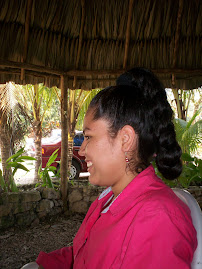





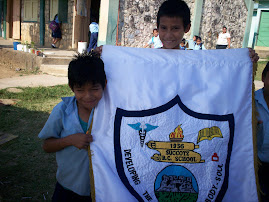



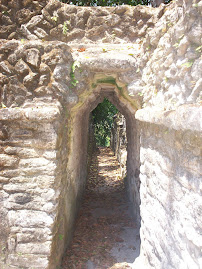


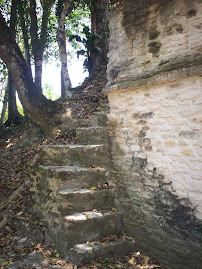




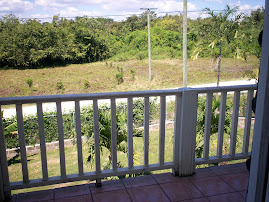


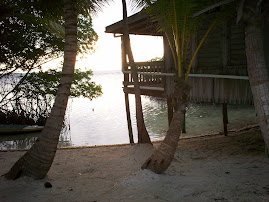
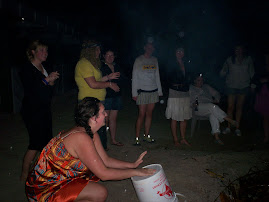

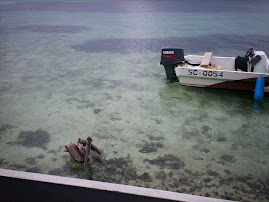

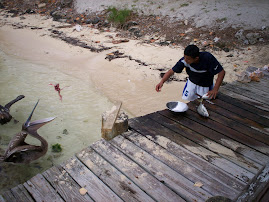
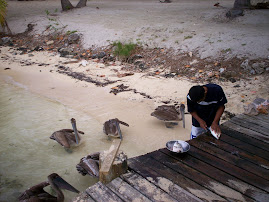
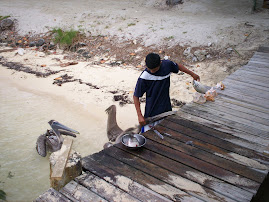

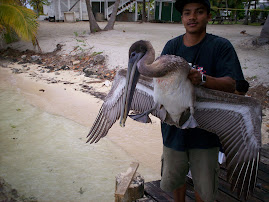


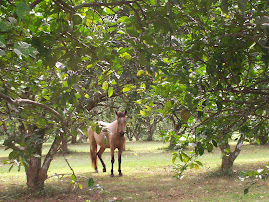
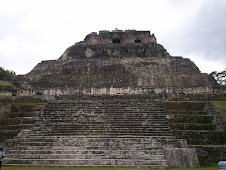
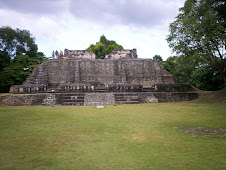
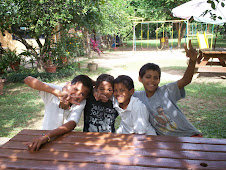





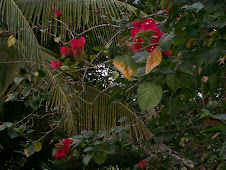

No comments:
Post a Comment